Analyse Cloverfield in terms of representations, narrative and audience.
Cloverfield, produced by JJ Abrams and his team (Matt Reeves and Drew Goddard), is a pulsating, visceral horror movie with intertextual elements of sci-fi and romance. Set in New York where a terrifying monster rampages through the city, the film provides non stop pleasure and entertainment for its audience but also I felt attempted to explore through the monster, how people must’ve reacted to the 9/11 terror attacks on the city. A differential or oppositional reading of the film provides several worthwhile areas for analysis.
I felt that the target audience/demographic for Cloverfield was most likely in the 15-25 student range. There are several reasons for this. It is clear that the film is a Horror movie.
It displays most of the key genre markers for horror. There is an otherness/abject in the form of the monster. This otherness/abject although mysterious in its motives and behaviour is nonetheless a part of the genre which a young audience will recognise (other examples being King Kong, Jaws and Godzilla). Monster movies have a good track record with young audiences/demographic. The monster terrorises the people of New York which in terms of the Horror genre is the terrible place. The monster emerges and attacks at night (after midnight in fact) something which would excite a young audience as they have come to expect the exciting connection between night and the otherness/abject. Furthermore like most movies in the Horror genre there is an element of punishment (the city, females) which again would add to the pleasures of the film for the audience/demographic. Horror has been a profitable genre for Hollywood since the beginning of the industry and has recently undergone a resurgence with the influence and popularity of Asian horror (Cloverfield was inspired by the 1954 Japanese Gojira/Godzilla).
As I have indicated the film has many pleasures which would draw in and engage a young audience/demographic. There are many scenes in the film of visceral pleasure. The main characters, trying to find their way through the carnage in search of their friend is gripping throughout. A big part of the pleasure is the fear and excitement generated by the monster’s unpredictability and the gruesome spiders which it seems to spawn. This can be clearly seen in the underground scenes where the characters battle for survival.
The film was made by JJ Abrams and his team. This also helps to identify the target audience/demographic. Abrams, Reeves and Goddard are best known for the hit series Lost and Felicity and the Pallbearer and with Buffy the Vampire Slayer. These programmes all have young audiences not unlike the one which would be targetted for Cloverfield. Like these TV hits it is true to say that Cloverfield has a young attractive cast which help target the audience.
The film also displays technical aspects which would attract and excite a young demographic. These include the highly effective and highly believable use of CGI in the film which young audiences have come to expect. The decapitated head of the Statue of Liberty thundering down the street was an astounding moment. The film also uses an interesting film technique appearing to use a non professional video camera throughout and naturalistic lighting. This heightens the excitement for the audience as they experience the terrors of the monster with the main characters. The style of filming is in my opinion very reminiscent of Youtube videos, a mode of instant film-making which would be very familiar to a young demographic who are the main users of Youtube.
A differential reading of the film also helps us understand narrative aspects of Cloverfield. The film in my opinion can be understood in terms of Classic Narrative.
The world of the film is most certainly verisimilar. New York is instantly recognisable as is the romance aspect of the narrative. The young people are easily understood and can be related to by their young audience. I also felt that their anxieties also seem real even though the source of those anxieties (the otherness) is not verisimilar. The verisimilar world of the film will undoubtedly help engage the audience.
The film roughly adheres to a 3 act structure of Classic Narrative. The equilibrium is established in the first 20 minutes of the film with the party and the Coney Island trip and the romance between Beth and Rob. A good deal of the equilibrium is shot in daylight naturalistic lighting. The disequilibrium is clearly the arrival of the monstrous abject which is signalled in the film with the power cut and lights of the skyscrapers going out. Most of the disequilibrium is shot in low key naturalistic lighting. It is debatable to what extent equilibrium is restored since the main characters are all destroyed. However the final shot of the film is of Rob and Beth at Coney Island arm in arm suggesting that they have found each other and expressed their feelings for each other.
The narrative of the film is propelled by the cause and effect actions of the characters. The monster attacks the city and the four main characters respond in various ways trying to survive and find their way to Beth. The search for Beth is caused by Rob and her disagreeing at his surprise party.
I thought it was interesting when considering whether the film had a strong narrative closure which is usually pleasurable to a young audience. The abject survives and is in fact seemingly indestructible. Nowhere in the city is safe as Beth and Rob discover as they shelter in a tunnel in Central Park. A normal narrative closure would be a confrontation with the monster and its defeat. However it is the main characters who are destroyed not the monster leaving several unanswered questions. On the other hand we can argue for a strong narrative closure insofar as Beth and Rob are finally together and have pronounced their love for one another. This is uplifting since their pledges of love are the last things we hear before they are destroyed by the otherness and it can be seen as a courageous statement which the monster cannot destroy even though it extinguishes life. This is underlined by the final scene which is from the Coney Island sequence.
The film’s main codes are action codes. Having said that, the film does seem to have enigma snares especially in the disequilibrium stages of the narrative. Questions such as what is happening to the city? Who or what is attacking them? Why are they being attacked? How will they survive? Will Rob make it through the city? – all act as snares as Roland Barthes defined them, hooking the audience into the unfolding narrative. The action codes which mainly centre around Rob’s journey through the city and the actions of the army against the abject all serve to raise the excitement level and engagement of the demographic. Examples of action codes in the film were when Rob receives the call on Brooklyn Bridge from Beth thus beginning his epic search for her. Also the arrival at the underground military base which propels the action towards Beth’s crumbling apartment. The action can be described as non stop from the arrival of the monster till the end of the film providing a relentless but satisfying cinematic experience for the young target demographic.
The final part of my analysis will look at representations in Cloverfield specifically female representations although I would also like to add some thoughts regarding the portrayal of New York in the film. Although the film is part of the Horror genre I found it interesting that the usual portrayal of females in that genre did not always apply in Cloverfield.
In fact the females in the film offer an interesting and complex range of representations when read differentially.
There are clearly examples of female courage in the film for example with Marlena in the tunnel when she saves Hud from the spiders. Also Beth shows courage in surviving in her building then dragging Rob from the helicopter wreckage. These actions perhaps challenge traditional views of gender.
On the other hand we see females in the film organising Rob’s party and showing care and thoughtfulness when the monster attacks. They follow Rob who is clearly the leader of the main characters but they do suggest alternatives to his plan which seem more cautious and logical.
Beth is ‘saved’ by Rob whom she calls for help. She can be described as the ‘female quest object’ (Propp) trapped in her ‘tower’ waiting to be saved by the male hero. This is a traditional representation of females in the film. Beth is represented here as a passive weak female who is dependent on the help of a man.
The males Rob and Hud are men of action – Rob seeking out his love, Beth and Hud determinedly recording the terror of the otherness on the video camera. Therefore we may say that male representations in the movie are traditional and conform to what we regard as normal.
Perhaps the most interesting representation in Cloverfield is the monster itself who may be considered female as it seems to spawn fleshy spiders. If so this suggests a monstrous female and therefore females are represented as destroyers and as the otherness. It could be argued that the female monster is bringing destruction to an essentially peaceful, young society and it is the men in the film who lead the action against its rampage.
As I mentioned earlier it is interesting to think about the representation of New York in the city. As has been mentioned earlier, the film can be seen as an exploration of 9/11. There are other films which explore this theme such as The Dark Knight, I am Legend and The Mist. In JJ Abrams’ Cloverfield the view of NYC is of a city in panic being wildly destroyed. Its wealthy young inhabitants have no idea what is attacking them or why they are being attacked. The terrorists are represented by a monster who brings meaningless chaos to their streets. Abrams seems to be suggesting that Al Queda terror can be explained in other films but what is important for the Cloverfield audience is that they experience what it feels like to be caught up at ground level, in a terror attack.
Wednesday, 1 October 2008
Subscribe to:
Post Comments (Atom)


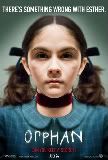
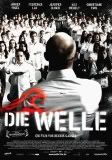




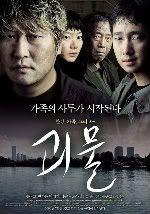

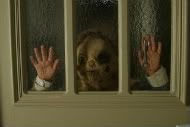
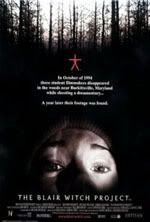
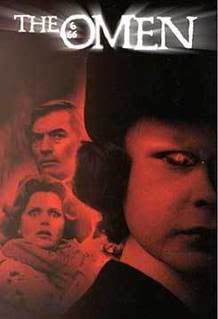


No comments:
Post a Comment